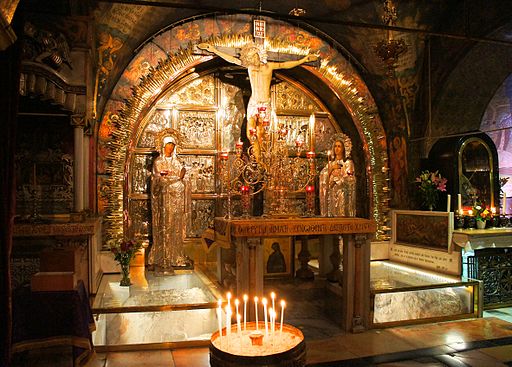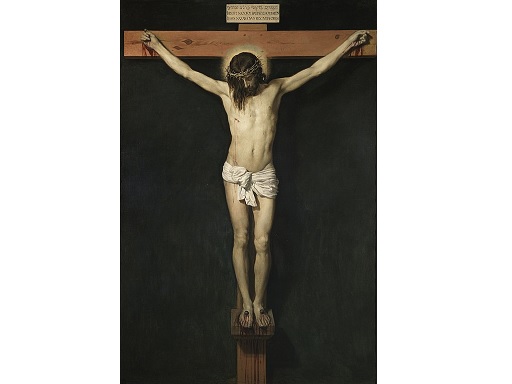The Church of Holy Sepulchre is one of the holiest sites in Christianity, as this is the site of the crucifixion of Jesus Christ.
Here you will find everything you need to know before visiting this holy site!
- Why is Church of Holy Sepulchre important?
- Where is Church of Holy Sepulchre located?
- What are the main Christian attractions in Church of Holy Sepulchre?
- What should I know before visiting Church of Holy Sepulchre?
- Are there any fun facts about Church of Holy Sepulchre?
Why is Church of Holy Sepulchre important?
The Church of Holy Sepulchre contains, according to traditions, the two holiest sites in Christianity –
The first is the site where Jesus was crucified, at a place known as Calvary or Golgotha. The second site is Jesus’s empty tomb, where he was buried and resurrected. The empty tomb is enclosed by a 19th-century shrine called the Aedicula.
The church also contains the last 5 stations of the Via Dolorosa, and has been a major Christian pilgrimage destination since its creation in the fourth century, as the traditional site of the resurrection of Christ. This is why it is also known as the Church of the Anastasis, which means the Church of Resurrection.

Where is Church of Holy Sepulchre located?
The Church of Holy Sepulchre is located in the Christian Quarter of the Old City of Jerusalem.
What are the main Christian attractions in Church of Holy Sepulchre?
The main Christian attractions in the Church of Holy Sepulchre are the last five stations (stations ten to fourteen) of the Via Dolorosa:
Division of Robes – station 10
After stripping Jesus of his clothes, Roman soldiers divided Christ’s clothes among them.
Crucifixion – station 11
Jesus is nailed to the cross and hung between two convicted thieves.
Just inside the church entrance is a stairway leading up to Calvary (Golgotha), traditionally regarded as the site of Jesus’ crucifixion and the most lavishly decorated part of the church.
On the ground floor, just underneath the Golgotha chapel, is the Chapel of Adam. According to tradition, Jesus was crucified over the place where Adam’s skull was buried.
Behind the Chapel of Adam is the Museum of the Greek Orthodox Patriarchate, which holds many relics, including a 12th-century crystal miter alleged to have once held a fragment of the Holy Cross.

Jesus dies on the cross – station 12
After several hours on the cross, Jesus perishes.
Descent from the Cross – station 13
Jesus Christ is taken down from the cross after his crucifixion.
Burial of Jesus – station 14
After the crucifixion and death of Christ, his body is buried.
Just inside the entrance to the church is the Stone of Anointing (also Stone of the Anointing or Stone of Unction), which tradition believes to be where Jesus’ body was prepared for burial by Joseph of Arimathea.
In and near the area of the Church of Holy Sepulchre you can find many other sites, including:
- The Monastery of St Abraham (Greek Orthodox)
- The Chapel of St John (Armenian Orthodox)
- The Chapel of St Michael (Coptic/Ethiopian Orthodox), giving access to the roof of the Chapel of St Helena and the Ethiopian monastery there.
- Chapel of the Franks—a blue-domed Roman Catholic Crusader chapel dedicated to Our Lady of Sorrows, which once provided exclusive access to Calvary. The chapel marks the 10th Station of the Cross (the stripping of Jesus’ garments).
- A Greek Orthodox oratory and chapel, directly beneath the Chapel of the Franks, dedicated to St. Mary of Egypt.
- The Chapel of St. James the Just (Greek Orthodox).
- The Chapel of St. John the Baptist (Greek Orthodox).
- The Chapel of the Forty Martyrs of Sebaste (Greek Orthodox; at the base of the bell tower).
What should I know before visiting Church of Holy Sepulchre?
As in every sacred place, modest dress is required for entrance to the churches.
For more information about Jesus in the Holy Land check out this amazing book on Amazon: 
Are there any fun facts about Church of Holy Sepulchre?
Of course!
- From the ninth century onward, the construction of churches inspired by the Church of Holy Sepulchre was extended across Europe. One example is Santo Stefano in Bologna, Italy, an agglomeration of seven churches recreating shrines of Jerusalem.
- Several churches and monasteries in Europe, Russia, and at least one church in the United States have been modeled on the Church of the Resurrection, some even reproducing other holy places for the benefit of pilgrims who could not travel to the Holy Land.

